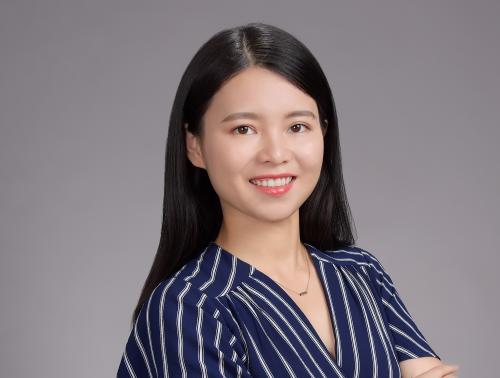師資
劉泉影博士,2019年9月加入南方科技大學,生物醫學工程系副教授,博士生導師,神經計算與控制實驗室(NCC lab)負責人。劉泉影博士畢業于瑞士蘇黎世聯邦理工(ETH Zurich)生物醫學工程方向,在美國加州理工學院(Caltech)進行計算與數學科學方向的博士后訓練。
劉泉影博士專注于類腦智能、多模態神經信號處理算法、腦網絡動力學建模、神經優化控制。提出了高通道腦電溯源算法,解決了腦電溯源精度不高、位置不準、靜息態腦網絡無法有效提取的問題;提出了數據驅動的腦網絡動力學建模方法,建立基于控制理論的神經刺激優化框架,解決大腦控制不準、控制不住的問題。
近5年,劉泉影在腦科學、人工智能、控制的交叉領域以一作或通訊作者身份發表SCI/EI學術論文40余篇,包括The Innovation, Neuroimage, Pattern Recognition, IEEE會刊等國際權威期刊,及NeurIPS, IJCAI, ACC等機器學習和控制頂會;譯著《認知和行為的計算建模》;Google Scholar顯示總引用2000余次,H因子23。申請專利12項;擔任IEEE期刊IEEE J TRANSL ENG HE副主編、中國神經科學學會計算神經科學專委會委員、中國神經科學學會神經調控分會理事、中國人工智能學會腦機融合與生物機器智能專委會委員、中國生物醫學工程學會醫學人工智能專委會青年委員、深圳市電子學會新一代人工智能專委會秘書;講授《機器學習與醫學工程應用》、《人腦智能與機器智能》等課程。
NCC lab研究集中在機器學習算法、多模態神經信號處理、神經計算建模、神經調控、醫學人工智能。結合動力學系統模型和深度學習模型研究神經信號表征,以探索大腦的計算機制,用于解釋神經信號、大腦功能和人類行為三者之間的關系。
NCC lab長期招收碩士生、博士生、博士后、研究助理(RA)、訪問學者、訪問本科生。博士申請者要求先來NCC lab訪問或做RA,通過考核,方可錄用。
(請感興趣的申請者把CV和personal statement發郵件給劉泉影老師)
研究方向
1)機器學習算法(深度生成模型、流形學習、圖模型)
2)神經計算建模(神經表征、腦網絡動力學)
3)多模態神經數據融合算法(DTI、fMRI、EEG、SEEG)
4)網絡控制理論(Network control theory)
5)神經反饋控制(TMS、tDCS/tACS,Neurofeedback)
6)雙向腦機接口(腦到機、機到腦)
教育經歷
2013-2017 博士,瑞士蘇黎世聯邦理工學院,健康科學與技術學院。導師:Nicole Wenderoth, Dante Mantini
2010-2013 碩士,中國蘭州大學,信息科學與工程學院,計算機軟件與理論。導師:胡斌教授
2006-2010 本科,中國蘭州大學,信息科學與工程學院,電子信息科學與技術。
研究經歷
2025.05 - 至今,副教授 (博導),南方科技大學,神經計算與控制實驗室PI
2019.08 - 2025.05,助理教授 (博導),南方科技大學,神經計算與控制實驗室PI
2017-2019 博士后,美國加州理工學院,計算與數學科學學院 。導師: Dr. John Doyle
2017-2019 研究員,美國亨廷頓醫學研究中心
2016-2017 訪問學者,比利時魯汶大學,運動控制與神經可塑性實驗室
2014-2015 訪問學者,英國牛津大學,實驗心理學院
研究項目
2021.01-2023.12 國家自然科學基金青年科學基金項目 (主持)
2022.01-2025.12 科技部國家重點研發計劃生物與信息融合專項項目(骨干)
2021.01-2022.12 深圳市科創委穩定支持計劃面上項目 (主持)
2021.07-2023.06 深港澳科技計劃(C類)項目 (主要參與人)
2021.01-2022.12 深圳市科創委可持續發展科技專項項目 (主要參與人)
2021.09-2022.09 教育部“港澳與內地大中小師生交流計劃大學生項目” (主持)
2020.01-2022.12 廣東省基礎與應用基礎研究基金項目 (主持)
2020.01-2020.12 廣東省研究生學術論壇基金 (主持)
2018-2021 比利時FWO Fellowship (主持,3 years,因回國而放棄)
2017-2019 美國Boswell Postdoctoral Fellowship (主持,完成)
2015-2017 瑞士Swiss National Science Foundation for Doc.Mobility grant (主持,完成)
2014-2015 瑞士Swiss National Science Foundation for Mobility grant (主持,完成)
獲獎
深圳市孔雀人才計劃C類;
AAIC travel award (2019);
Estes Stars Award (2018)
研究方向及代表性論文
方向1、機器學習算法(Machine learning algorithms):基于深度學習、生成模型、流形學習等方法,研究人腦智能與人工智能的關系
1) X Ran*, M Xu, L Mei, Q Xu, Liu Q*. (2021), Detecting Out-of-distribution Samples via Variational Auto-encoder with Reliable Uncertainty Estimation, Neural Networks
2) X Ran, M Xu, Q Xu, H Zhou, Liu A*, Liu Q*. (2020), Bigeminal Priors Variational auto-encoder, arXiv:2010.01819
3) Yin W, Ma Z, Liu Q*. (2021), Riemannian Manifold Optimization for Discriminant Subspace Learning, arXiv:2101.08032
4) Yin W, Ma Z, Liu Q*. (2021), HyperNTF: A Hypergraph Regularized Nonnegative Tensor Factorization for Dimensionality Reduction, arXiv:2101.06827
方向2、深度學習在神經科學與神經信號處理中的應用(Deep learning for Neuroscience):將深度學習應用于腦電去噪、腦源定位、腦網絡辨識、腦疾病診斷等等
5) Zhang H#, Zhao M#, Li Z, Mantini D, Wei C, Liu Q*. (2021), EEGdenoiseNet: A benchmark dataset for deep learning solutions of EEG denoising, Journal of Neural Engineering
6) H Zhang, C Wei, M Zhao, H Wu, Q Liu*. (2021). A novel convolutional neural network model to remove muscle artifacts from EEG, 2021 IEEE International Conference on Acoustics, Speech and Signal Processing (ICASSP).
7) C Wei, K Lou, Z Wang, M Zhao, D Mantini, Q Liu*. (2021). Edge Sparse Basis Network: A Deep Learning Framework for EEG Source Localization, IJCNN.
8) Liu Q, Wu H, Liu A (2019). Modeling and Interpreting Real-world Human Risk Decision Making with Inverse Reinforcement Learning, Real-world Sequential Decision Making workshop at the 36th International Conference on Machine Learning (ICML).
9) J Yuan, X Ran, K Liu, C Yao, Y Yao, H Wu, Q Liu*. (2021). Machine Learning Applications on Neuroimaging for Diagnosis and Prognosis of Epilepsy: A Review, arXiv:2102.03336
方向3、控制理論用于腦網絡控制(Control theory for Brain network control):利用優化控制理論、網絡控制理論,反向工程神經的控制原理,提出新的神經反饋優化控制算法
10) Nakahira Y, Liu Q, Sejnowski T, Doyle J.C. (2021), Diversity-enabled sweet spots in layered architectures and speed-accuracy trade-offs in sensorimotor control, PNAS
11) Z Liang, Z Luo, K Liu, J Qiu, Q Liu*, (2021). Deep Koopman-operator based model predictive control for closed-loop electrical neurostimulation in epilepsy, arXiv:2103.14321
12) Nakahira Y#, Liu Q#, Sejnowski T, Doyle J.C. (2019), Fitts' Law for speed-accuracy trade-off describes a diversity-enabled sweet spot in sensorimotor control, https://arxiv.org/pdf/1906.00905.pdf (# co-first author)
13) Liu Q, C Kurniawan, C Xu, S Jagtap, X Deng, K Lou, YS Soh, Y Nakahira (2021). Axon Arbor Trade-off Between Wiring Cost, Delay, and Synchronization in Neuronal Networks, 2021 55th Annual Conference on Information Sciences and Systems (CISS).
14) Liu Q, Nakahira Y, Mohideen A, Dai A, Choi S, Pan A, Ho D, and Doyle J (2019). Experimental and educational platforms for studying architecture and tradeoffs in human sensorimotor control, American Control Conference (ACC).
15) Liu Q, Yorie Nakahira, Zhichao Liang, Ahkeel Mohideen, Adam Dai, Sung Hoon Choi, Angelina Pan, Dimitar M. Ho, John C. Doyle, (2020). WheelCon: A Wheel Control-Based Gaming Platform for Studying Human Sensorimotor Control, Journal of Visualized Experiments (JoVE)
方向4、多模態腦影像處理、腦網絡建模(Multimodal Brain imaging; Brain network modelling):利用EEG、SEEG、fMRI、DTI等多模態神經信號,提出多模態神經信號處理新算法,構建腦網絡模型,挖掘信息在不同腦區之間流動的關系
16) S Zheng, Z Liang, Y Qu, Q Wu, H Wu, & Q Liu *. (2021). Kuramoto model based analysis reveals oxytocin effects on brain network dynamics. International Journal of Neural System.
17) Wu H, Feng C, Lu X, Liu X, Liu Q*, (2020). Oxytocin effects on the resting-state mentalizing brain network, Brain Imaging and Behavior
18) Samogin J#, Liu Q#, Marino M, Wenderoth N, Mantini D. (2019), Shared and connection-specific intrinsic interactions in the default mode network, NeuroImage (2019) 474–481 (# equal contribution)
19) Marino M#, Liu Q#, Samogin J, Tecchio F, Mantini D, Porcaro C (2019). Neuronal dynamics enable the functional differentiation of resting state networks in the human brain, Human Brain Mapping, 40(5):1445-1457. (# equal contribution)
20) Liu Q, Ganzetti M, Wenderoth N, Mantini D, (2018). Detecting large-scale brain networks using EEG: impact of electrode density, head modelling and source localization, Frontiers in Neuroinformatics 12 (4)
21) Liu Q, Farahibozorg S, Porcaro C, Wenderoth N and Mantini D (2017). Detecting large-scale networks in the human brain using high-density electroencephalography. Human Brain Mapping. 38 (9), 4631-4643
22) Liu Q, Balsters JH, Baechinger M, van der Groen O, Wenderoth N and Mantini D (2015). Estimating a neutral reference for electroencephalographic recordings: the importance of using a high-density montage and a realistic head model. Journal of Neural Engineering 12(5): 056012.

